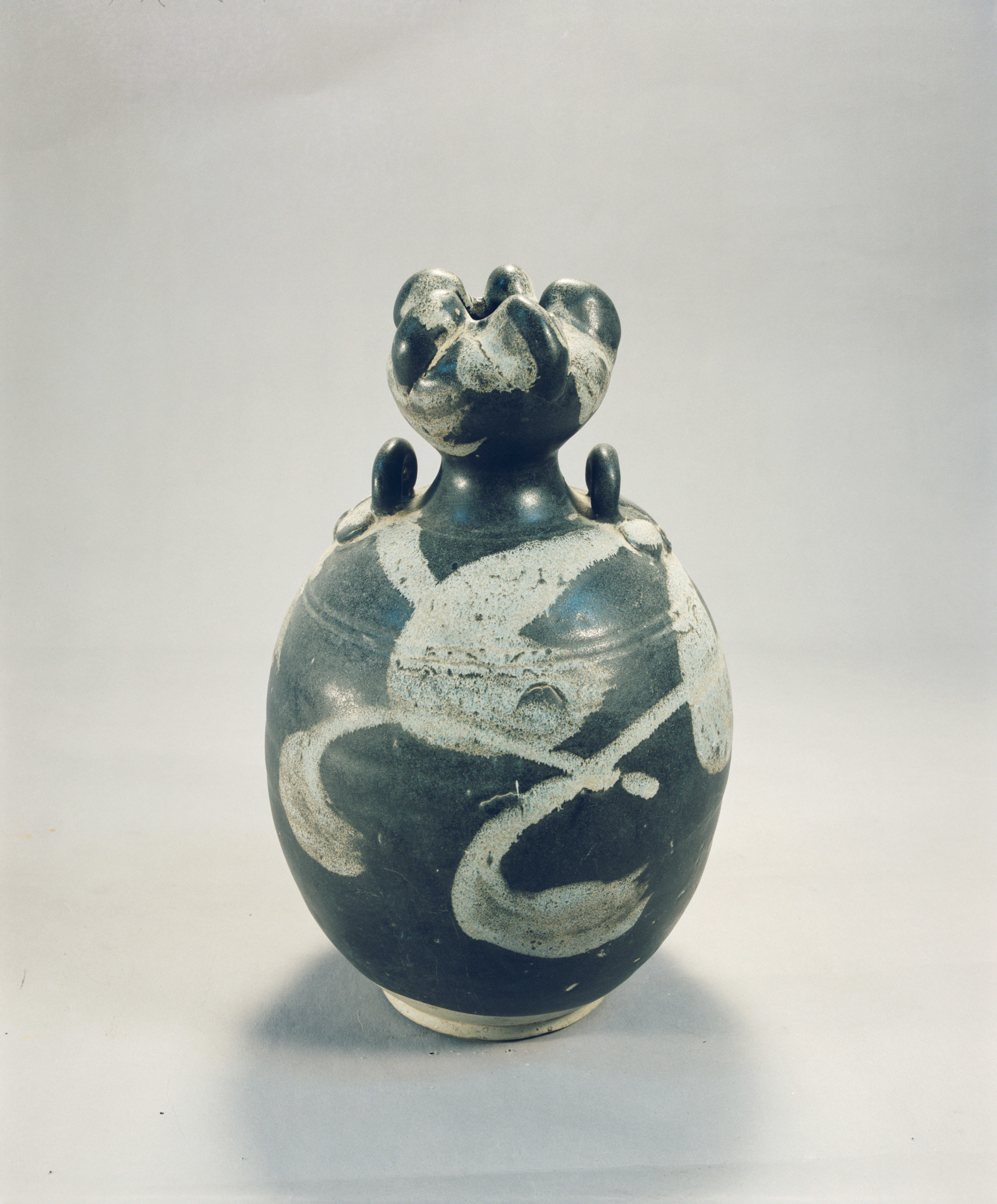Date: Tang Dynasty (618-907)
Provenance: Unearthed in Xinye county, Nanyang, Henan province, 1973
Measurements: Mouth diameter: 10 cm, Bottom diameter: 11.5 cm, Height: 34.5 cm
Speckle-glazed stoneware originated during the Tang Dynasty, signifying a significant achievement in northern China's ceramics production. This technique involves applying, painting, and splashing blue, brown, or moon-white spots onto a base glaze in black, yellow, yellow-brown, or tea-dust. The high-temperature firing process results in the melting and diffusion of the base glaze and colored spots, creating unpredictable and varied patterns. After firing, the colored spots naturally flow on the base glaze, forming a visually striking contrast of different glaze colors.
This pot has a mouth resembling a five-cloved garlic, imitating the shape of a bronze vessel. It is entirely covered in black glaze, with irregular gray-white patches on the black glaze. These randomly scattered gray-white patches provide both the spatial design and color variation of the pattern on the pot, enhancing the artistic appeal of the otherwise ordinary black-glazed garlic-head flask.

